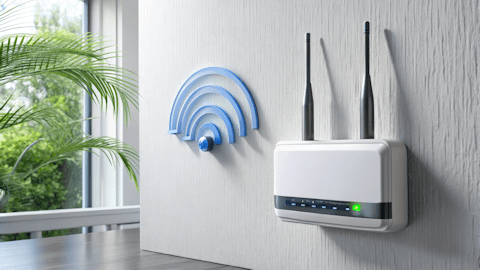Wireless Alarm Repeaters - GeoArm Security®
Free for orders $200 & above!
Free for orders $200 & above!
Free for orders $200 & above!
Free for orders $200 & above!
Free for orders $200 & above!
Free for orders $200 & above!
Free for orders $200 & above!
Wireless RF Repeater
Expands Range of Peripherals!
A wireless alarm repeater, also known as a signal booster, is a device that extends the wireless range and coverage area of a security system. It receives signals from wireless devices such as sensors or detectors and amplifies the signal to transmit it further to the control panel. This is useful when the distance between the wireless devices and the security control panel is extensive, and the signals may not be strong enough to be picked up by the control panel. A repeater helps to ensure that all wireless devices are communicating with the control panel effectively and enhances the overall effectiveness and reliability of the security system.

Common Uses for Alarm Signal Repeaters?
1. Range Extension - They help in extending the communication range between the alarm sensors and the main control panel, especially in large buildings or areas with obstacles that can block signals.
2. Signal Boosting - In environments with thick walls, metal structures, or other signal-interfering materials, repeaters boost the signal strength to ensure reliable communication.
3. Coverage in Multi-Story Buildings - In multi-story homes or buildings, repeaters ensure that signals from sensors on different floors reach the control panel without interruption.
4. Overcoming Dead Zones - They help eliminate dead zones where the signal might be weak or non-existent, ensuring comprehensive coverage throughout the property.
5. Improving System Reliability - By ensuring that all parts of the alarm system can communicate effectively, repeaters enhance the overall reliability and responsiveness of the security system.
6. Flexibility in Sensor Placement - With repeaters, sensors can be placed in optimal locations for detection without worrying about distance limitations from the control panel.
7. Cost-Effective - Installing a wireless alarm repeater is a cost-effective solution for expanding the coverage area of a security system, particularly in larger homes or businesses, as it reduces the installation costs of additional sensors into an existing control panel.
Installation Tips for Alarm Signal Repeaters?
1. Optimal Placement - Position the repeater in a location that is central to the area where signal coverage is needed. Avoid placing it too close to the main control panel or the farthest sensor, as this can affect signal strength.
2. Avoid Obstructions - Install the repeater in an area free from large metal objects, thick walls, or other obstructions that could interfere with the wireless signal. This helps maintain a strong and reliable connection.
3. Height Considerations - Mount the repeater at an appropriate height, typically at least 5 to 6 feet off the ground, to maximize signal range and minimize interference from furniture or other obstacles.
4. Power Supply - Ensure the repeater is connected to a reliable power source. If it uses batteries, check that they are fully charged and consider using high-quality, long-lasting batteries.
5. Signal Testing - After installation, test the signal strength and coverage area to ensure the repeater is effectively extending the range. Adjust the position if necessary to improve performance.
6. Compatibility - Verify that the repeater is compatible with your existing security system and follows the manufacturer's guidelines for installation and operation.
7. Firmware Updates - Regularly check for and install any firmware updates provided by the manufacturer to ensure the repeater operates with the latest features and security patches.
8. Environmental Considerations - If the repeater is installed outdoors, ensure it is weatherproof or housed in a protective enclosure to prevent damage from the elements.













